Producing high-quality content is very important in our digital marketing era to reach your target audience and build your company's credibility. As a result, it's essential to understand the differences as well as the importance of the two primary approaches: inbound and outbound email marketing. In order to achieve the best results for your campaigns, let's examine these differences and how to reach the perfect balance.
Introduction
Regardless of size, email marketing is a powerful tool for any business. All effective marketing strategies should include it since it enables businesses to communicate with their clients through personalized and targeted messaging while increasing brand awareness. For example, inbound email marketing aims to create the perfect situation and conditions so that the client will contact us first and only then become a customer. Of course, there are exceptions, such as when the customer first receives an email about a purchase or delivery information.
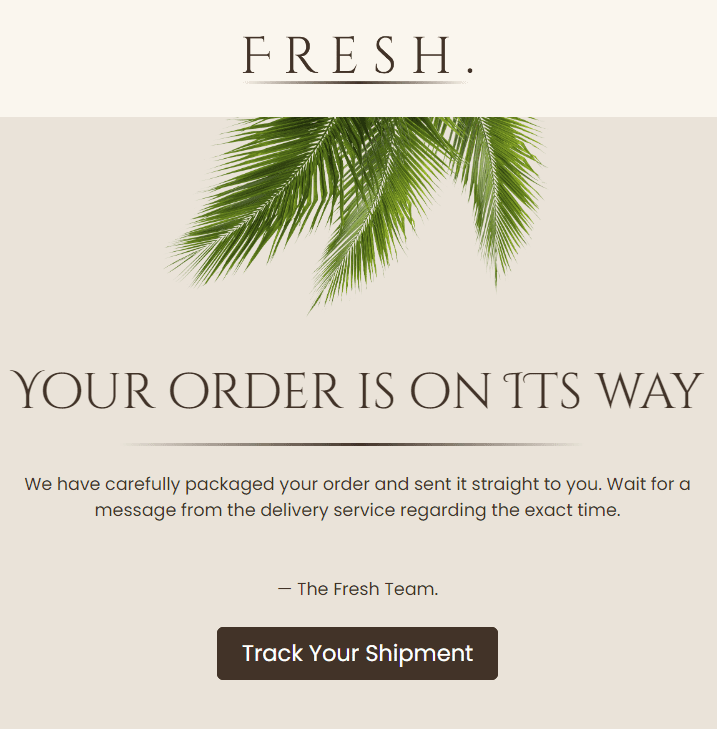
Explanation of inbound and outbound email marketing
Inbound email marketing
Inbound email can significantly boost your business by enticing customers with valuable content and offers. The approach can include various content types that you share in email such as blog posts, social media updates, newsletters, and webinars.
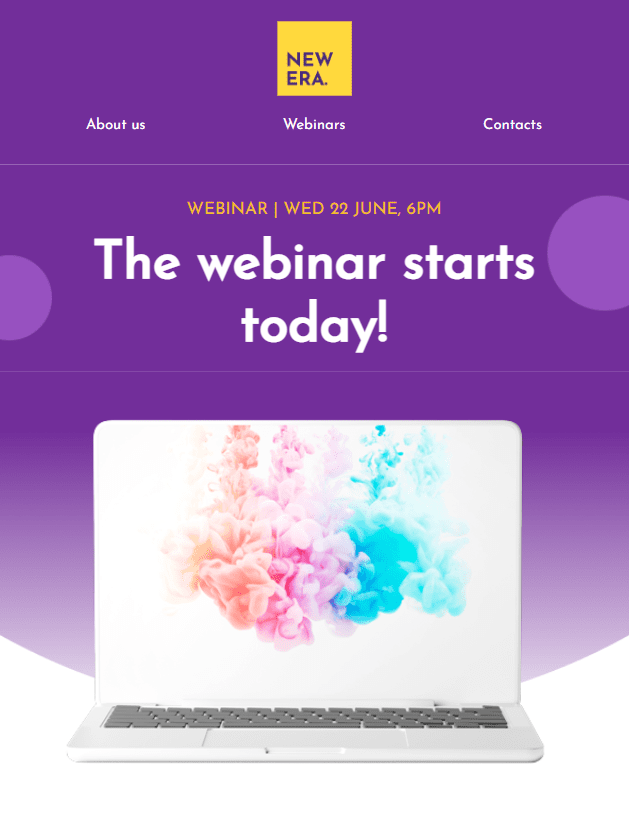
(Source: Stripo template)
How can email marketing fuel your overall inbound strategy?
The key to effective inbound email marketing is targeting and personalizing your content. Doing so can increase engagement rates, which is one of the primary benefits of inbound email marketing.
Tools for email marketing automation will help you monitor your customers’ needs and preferences and customize your content to suit your intended audience's specific needs and interests.
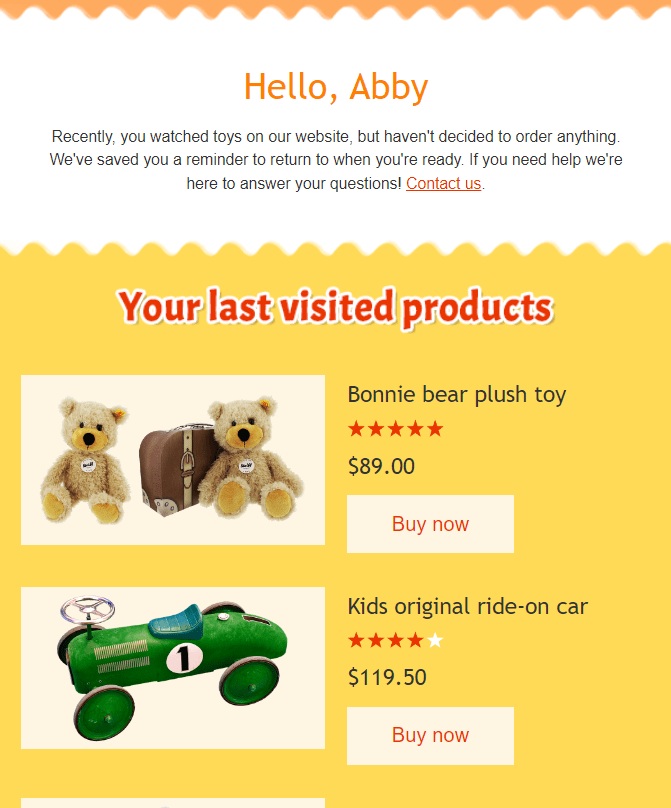
(Source: Stripo template)
And the most important thing is that this kind of email is sent only with the permission of the client himself. Unlike outbound marketing, the goal of inbound marketing is that the clients don't get daily spam about things they don't need.
Outbound email marketing
On the other hand, outbound email aims to reach clients through promotional emails, which in most cases are unsolicited. In Europe, for instance, sending unsolicited emails, commonly known as spam, can lead to legal consequences and hefty fines. Therefore, companies are now taking extra precautions by incorporating a double opt-in process during registration or subscription. This process requires users to confirm their willingness to receive newsletters by checking a box or verify the subscription by confirmation email.
This practice ensures that users are not added to any email lists without their consent and helps companies maintain their ethical and legal standards.
While email marketing can be a powerful tool, it's crucial to conduct it ethically and legally to avoid any negative repercussions. This will also help maintain the trust of the users and the company's credibility in the long run and create effective email campaigns that will help with your business objectives and target audience.
Inbound vs. outbound email marketing: a comparison
Inbound and outbound email marketing are two different approaches that connect you with your customers through email. The first is about attracting customers who have already expressed an interest in your brand, while the other is about reaching out to a broader audience.
Inbound email marketing
Pros:
- higher engagement rates: Since you're targeting customers who have already shown an interest in your brand, they're more likely to engage with your emails;
- better targeting: By segmenting your audience and personalizing your messages, you can deliver more relevant content to each customer's needs and interests;
- more cost-effective: Inbound email marketing typically requires less investment since you're not reaching out to a large, unfamiliar audience.
Cons:
- limited reach: Your potential audience is smaller since you're targeting customers who have already interacted with your brand;
- slower results: Building a loyal customer base through inbound email marketing takes time and effort.
Outbound email marketing
Pros:
- wider reach: Outbound email marketing allows you to reach a larger audience, potentially increasing brand awareness and sales;
- faster results: Since you're reaching out to a broader audience, you can see results more quickly than with inbound email marketing;
- easier to scale: Outbound email marketing can be easier to scale since you're not relying on existing customers.
Cons:
- lower engagement rates: Since you're reaching out to a broader audience, your emails may be less targeted or relevant to each recipient;
- higher costs: Outbound email marketing typically requires a more significant investment since you need to reach a larger audience.
Let's take a closer look at the pros and cons of each.
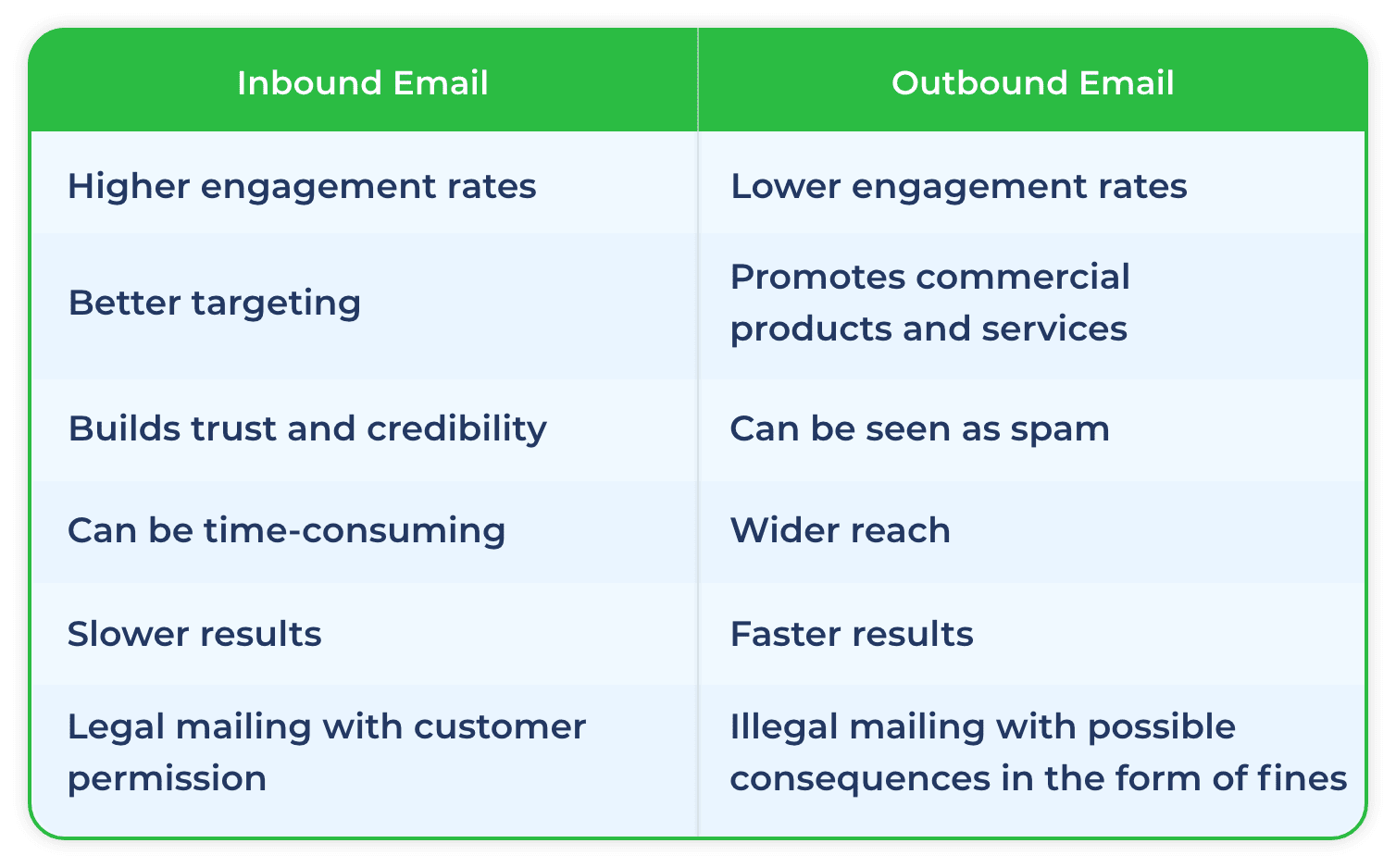
Strategies for inbound email marketing
In reality, most businesses use a combination of inbound and outbound email marketing strategies to create a successful email marketing campaign. But inbound marketing is getting more and more favored.
Here are some tips for inbound email marketing:
- segment your audience: Use inbound email marketing tactics to segment your audience and personalize your messages;
- craft compelling subject lines: Use inbound email marketing tactics to create subject lines that grab your audience's attention and entice them to open your emails;
- include a clear call to action: Use inbound email marketing tactics to include a clear call to action in your emails that encourages recipients to take action;
- monitor your results: Track your email campaign's results and optimize your email marketing campaigns for maximum effectiveness to achieve your business goals;
Wrapping up
Understanding the difference between inbound and outbound email marketing is vital to creating a successful email marketing campaign. By understanding the pros and cons of each approach, you can find the right strategy for your business and start seeing results!





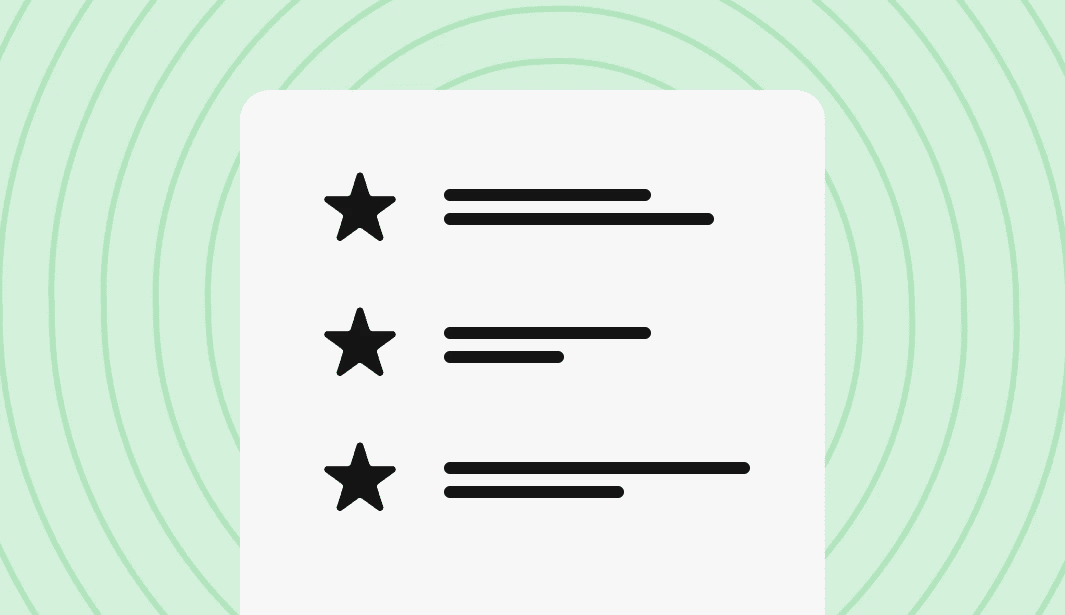

0 comments